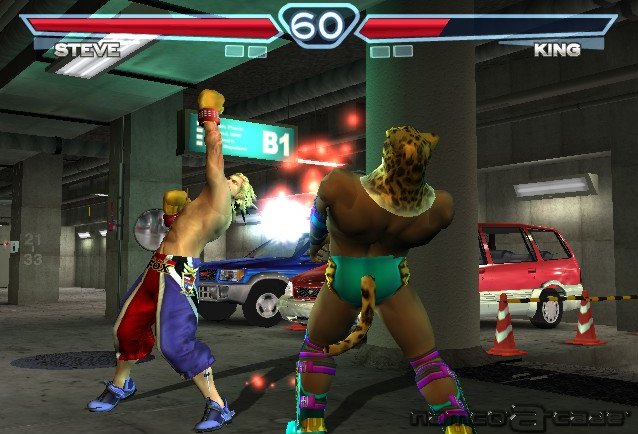

This search eventually led Heihachi to G Corporation, a leading-edge biotech firm making unprecedented advances in the field of biogenetics research. Heihachi paid particular attention to the corpse’s back, which had what looked like deformed, protruding wing-like limbs.Ĭonvinced that the picture was of Kazuya, his own son whom he threw into a volcano 20 years ago, Heihachi diverted all his resources into a search for the body. The 20-year-old photograph was an image of a burnt corpse covered with laceration wounds. However, Heihachi discovered a photograph during his investigation that stirred his curiosity. Jin’s whereabouts were unknown after the Tournament. Upon his transformation, he struck down Heihachi and took flight. As his life slipped away, Jin transformed into a Devil. Jin, who vanquished Ogre in The King of Iron Fist Tournament 3, was shot and mortally wounded by Heihachi. Heihachi learned that his own genome lacked the Devil Gene, but he knew someone who did.

TEKKEN 4 CHARACTER CODE
However, the research was unsuccessful.Īfter extensive experimentation, Heihachi’s bioengineers came to the conclusion that an additional gene - the Devil Gene - was necessary in order to successfully splice Ogre’s genetic code into another living organism. Heihachi’s goal was to create a new life form by splicing Ogre’s genome with his own.
TEKKEN 4 CHARACTER SKIN
Not willing to give up, Heihachi ordered his researchers to collect blood samples, skin tissue, and hoof fragments left behind by Ogre (or known as True Ogre in its true manifestation) in order to conduct genetic experiments. Two years ago, Heihachi failed to capture Ogre. Nominated for Best Fighting Game of 2002 at GameSpot. The review highlighted Tekken 4's experimental and pretty nature, and that overall it is a more solid and thoughtful proposition than its predecessor, but concluded that the game feels "over-familiar and curiously uninspired."Į3 2002 Game Critics Awards: Best Fighting Game. Edge reviewed Tekken 4 in their June 2004 issue, awarding six out of ten. Tekken 4 was one of the most criticized games of the series, mainly for it's slightly flawed gameplay (for example, collision detection flaws created numerous exploitable glitches that allowed for massive combos that were totally inescapable), plus, for having around half as many characters as Tekken Tag Tournament and Jin Kazama's fighting style to be dramatically changed from Mishima Style Fighting Karate to standard Karate, and made to be unlocked, put away some fans of the previous games in the series, but shaped Tekken 5 with more involvement in the story (with beginning explanation to a character's story) and the introduction of environmental damage (on walls and in one or two stages, the ceiling).ĭespite receiving an average of 82% at Game Rankings, Tekken 4 stands as the least critically successful game of the Tekken series. First released in arcades in July, 2001, it was released on Playstation 2 in March 28th, 2002 for Japan, September 13th, 2002 for Europe and September 23rd, 2002 for North America. Tekken 4 is the fifth installment in the Tekken series.


 0 kommentar(er)
0 kommentar(er)
